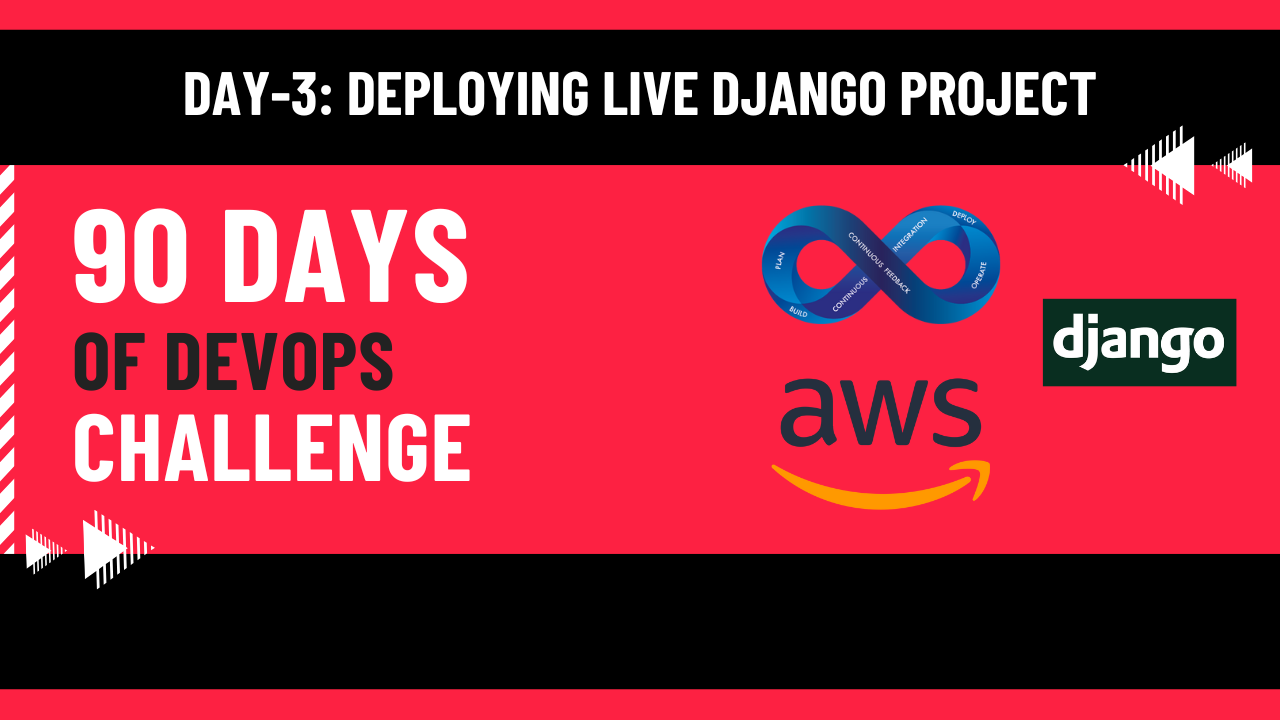Essential Guidelines for Publishing Your Django Project Online
 Harendra Barot
Harendra Barot
Django-based "My Notes" Application Deployment
Application Overview: "My Notes" is a simple note-taking application built using Django. It allows users to create, store, and manage notes, similar to notepad applications used on mobile devices.
Prerequisites:
Docker & Docker Compose
Ensure Docker and Docker Compose are installed on your machine. These tools will help in containerizing and orchestrating the application and its dependencies.Django and Gunicorn
Django framework is required to run the web application. Gunicorn is used as the WSGI server for running the Django application in production.MySQL Database
The application uses MySQL as the database to store notes and user data.
Deployment Steps:
Docker Compose Setup
Thedocker-compose.ymlfile is used to define the services for the application, including:nginx: The reverse proxy server that handles HTTP requests.
django_app: The Django application server.
db: The MySQL database container.
Dockerfile Configuration
- The
Dockerfileis responsible for setting up the environment for both Django and Nginx. Ensure it contains the necessary steps like copying project files, installing dependencies, and configuring the environment.
- The
Application Build
The following services are configured indocker-compose.yml:nginx: Acts as a reverse proxy for the application.
django_app: Hosts the Django application, runs migrations, and starts the Gunicorn server.
db: The MySQL container holds the data for the application.
Database Setup
Ensure the MySQL database is initialized with necessary credentials and configurations:MYSQL_ROOT_PASSWORDis set.MYSQL_DATABASEis defined for the application's data.
Ports Configuration
- Port 80 for Nginx (HTTP) and port 8000 for Django application.
Ensure no conflicts with other running services on the same ports.
- Port 80 for Nginx (HTTP) and port 8000 for Django application.
Volumes Configuration
Define volumes to persist data across restarts, especially for MySQL.volumes: - ./data/mysql/db:/var/lib/mysql
Health Checks
Define health checks for services to ensure they are running correctly:Django App: Test access to the admin panel via HTTP.
MySQL: Ping the MySQL server to check its availability.
Running the Application:
Once all configurations are done, the application can be built and deployed using Docker Compose, which will:
Build the images for all services.
Start the containers for Nginx, Django, and MySQL.
Troubleshooting Docker Compose and Deployment Issues
1. Address Already in Use Error
Issue: The port is already in use by another process.
Solution:
Identify the process using the port (
80or8000) usinglsofor equivalent.Terminate the conflicting process or choose a different port for the service in the
docker-compose.ymlfile.
2. Container Name Conflict
Issue: A container with the same name already exists.
Solution:
Remove the existing container using the container ID or name.
Alternatively, rename the container in the
docker-compose.yml.
3. No Permission to Read from Files
Issue: Insufficient permissions to access or read certain files (e.g.,
#ib_16384_0.dblwr).Solution:
Ensure the appropriate permissions for the directory and files.
Use
chmodto modify file permissions or adjust the file ownership if needed.
4. Memory or Disk Space Issues
Issue: Insufficient disk space or memory (e.g., error with
mysql.ibd).Solution:
Free up disk space by removing unnecessary files or containers.
Ensure that the Docker containers have enough disk space and memory allocated.
5. YAML Formatting Errors in Docker Compose
Issue: Incorrect YAML syntax (e.g., incorrect use of spaces, missing colons).
Solution:
Check for indentation errors and ensure that each key is properly mapped with values.
Use YAML validators to check the correctness of the file.
6. Cannot Find or Read Dockerfile
Issue: Dockerfile is missing or misplaced.
Solution:
Ensure the
Dockerfileexists in the correct directory specified in thedocker-compose.ymlfile.If missing, create a valid
Dockerfileor update the path indocker-compose.ymlaccordingly.
7. Build Context Issues (e.g., permissions or invalid files)
Issue: The build context or files required for the build are inaccessible.
Solution:
Verify the file paths in the
docker-compose.yml.Ensure all necessary files (e.g.,
requirements.txt,.env) are present and readable.
8. Docker Networking Issues (Binding Ports)
Issue: Docker can't bind to the specified port (
80,8000, etc.).Solution:
Identify other services or processes occupying the port.
Change the port mapping in
docker-compose.ymlor stop the service using the port.
9. Service Dependency Issues
Issue: One service cannot start due to dependency issues (e.g., database not available).
Solution:
Ensure that services are correctly ordered in
docker-compose.ymlusing thedepends_onkey.Check the health check conditions to ensure services are started in the correct sequence.
10. File Permission or Volume Mount Issues
Issue: Cannot read from or write to mounted volumes (e.g., MySQL database files).
Solution:
Ensure the volumes specified in the
docker-compose.ymlfile have correct permissions.Adjust the file ownership or ensure Docker has sufficient access to the directories.
Conclusion:
This setup provides a straightforward way to deploy a Django-based "My Notes" application in a containerized environment using Docker and Docker Compose. Ensure that all configurations are correct and monitor the containers for any issues during deployment.
Checkout my GitHub repository, if you like to watch the whole project. https://github.com/Sudoharry/Live-Project-Devops/tree/main/Day02
Subscribe to my newsletter
Read articles from Harendra Barot directly inside your inbox. Subscribe to the newsletter, and don't miss out.
Written by

Harendra Barot
Harendra Barot
I'm an IT professional and business analyst, sharing my day-to-day troubleshooting challenges to help others gain practical experience while exploring the latest technology trends and DevOps practices. My goal is to create a space for exchanging ideas, discussing solutions, and staying updated with evolving tech practices.